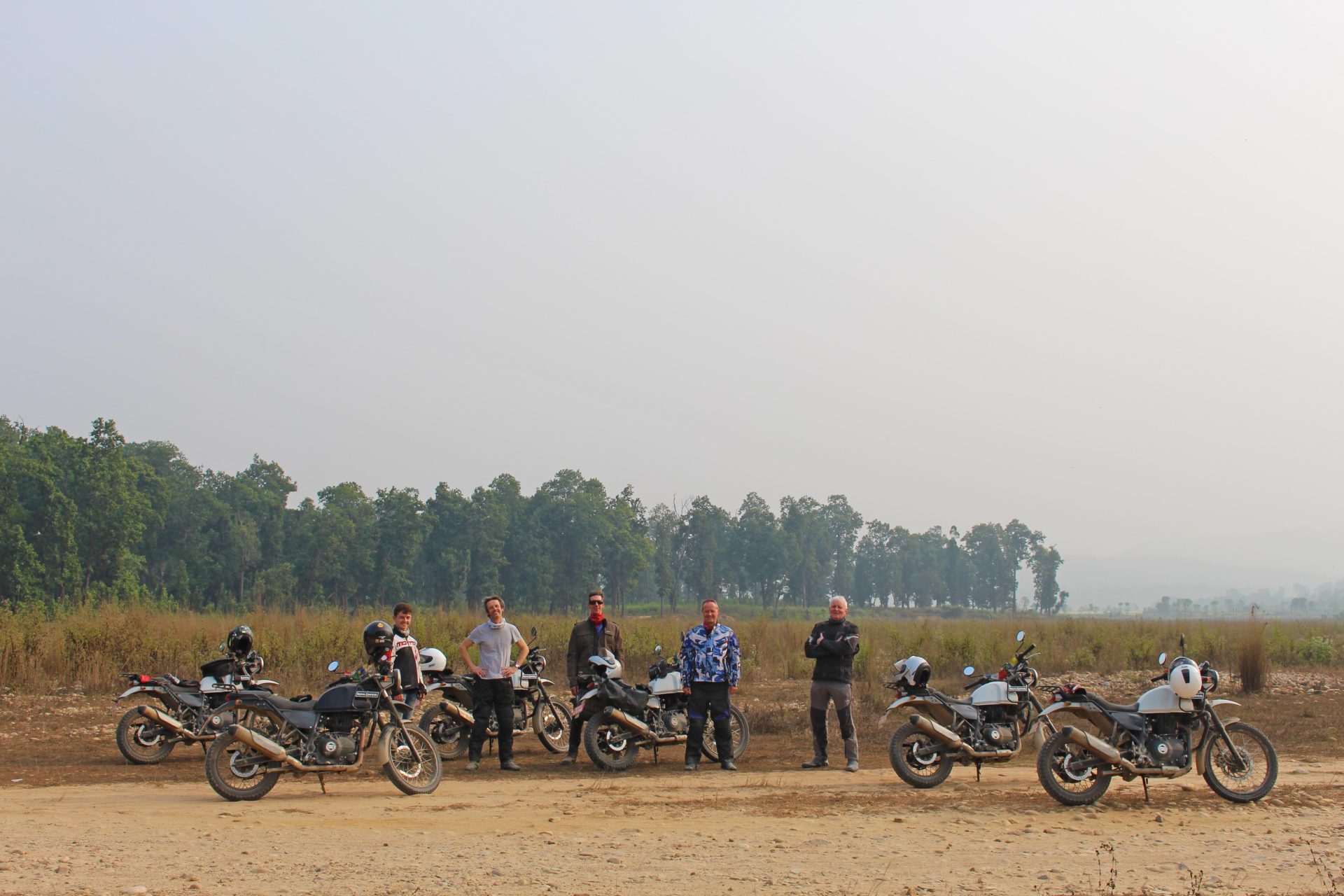Often overlooked, never underappreciated: The Terai Region of Nepal

When you hear that eight out of the ten tallest mountains in the world are inside Nepal’s border, it’s easy to think there’s not much else. A possible reason why most visitors tend to only hover up in the Himalayas.
But for some who prefer motorcycle boots to trekking boots, the flatland known as the Terai offers a unique adventure like nowhere else in Nepal. The ride in these plains is as thrilling as the mountain roads that wind down to them.

The Dusty Terai Region
It gets interesting from Bhutwal as you get on the straight road to Lumbini, the birthplace of prince Siddhartha Gautama, who later became the Buddha. Much of this road cuts through endless fields and tiny villages with gleeful kids waving at you as you ride past.
Eventually, you reach the Maya Devi temple and its compound is as serene and orderly as the outside is dusty and chaotic. The UNESCO heritage site with archeological remains from the 3rd century BC mainly attracts Buddhist pilgrims from across the globe and not the usual tourist.
Reaching here covered in the dust thanks to being on a motorcycle and then walking barefoot through its sacred ground is one sure way to embrace a sense of sojourning.
From Lumbini, you keep riding east, past the buffalo herders, countless cycles and tractors until the East-West Highway goes through dense forest. A turnoff takes you down into more fields and villages to finally arrive at the Chitwan National Park. This 93,200 hectare of parkland is another UNESCO protected site that is a surprising contrast to what Nepal is typically famous for.
The best chance to spot animals in the wild in Chitwan is from the safety of a safari vehicle. The last thing you want is to be chased by a one-horned rhino or herd of wild boars or cross paths with a bear or a tiger. If you do ride in the outskirts of the parks “buffer zone” make sure you are accompanied by a local.

Motorcycling in Chitwan
The indigenous Tharu people here are known to be genetically immune to malaria-carrying mosquitoes. Legend claims it has something to do with the amount of home-brewed alcohol they used to drink. Regardless of whether you’re in the mountains or in the plains of Nepal, one common factor which is consistent everywhere is the resilience and kindness of the Nepali people.
From Chitwan, the dusty highway once again takes you past the paddy fields and slowly but surely winds its way up to the forest belt and then up the hills. By the time you reach Hitauda, you have had your fill of Nepal’s best stretch of flatlands and experienced the other side of its geography.
So next time someone says, there’s nothing but mountains to see in Nepal, tell them about the Terai.
Two Wheeled Expeditions rides Nepal in April, October and November 2020
Recent Stories
- I Can Do This! The Women of Two Wheeled Expeditions and how biking became their lives. November 13, 2024
- Cracking the Code on Covid Travel November 13, 2024
- Sri Lanka – The Perfect Adventure Motorcycling Destination November 13, 2024
- Sidecars..a source of pure joy November 13, 2024
- Is Klim’s Badlands Pro the best riding suit in the history of the universe? November 13, 2024
Related Topics
Expeditions
Recent Posts
Recent Comments
Archives
Categories
- Adventure Motorcycling
- Adventure Travel
- Africa Twin
- Bhutan
- Bikaner
- Bike Reviews
- BMW Motorrad
- dirt biking
- Honda
- India Motorcycling
- Kerala
- KTM
- Ladakh
- Lady Bikers
- Lady Bikers
- motorcycling skills
- Nepal
- Nepal Motorcycling
- Rajasthan
- Royal Enfield
- Sri Lanka
- Uncategorized
- Vintage Motorcycles
- Vintage Motorcycles
- Women Bikers
- Women Motorcyclist
- Women's Motorcycle Tours